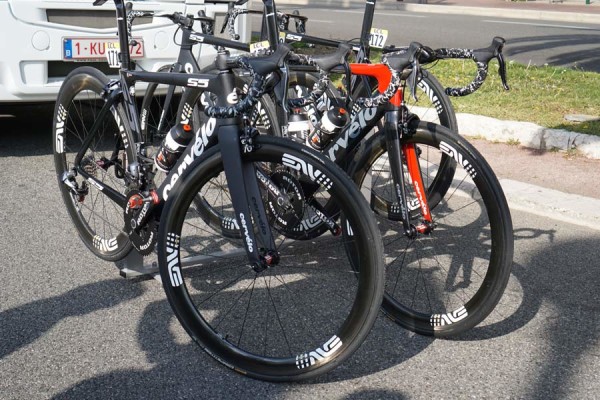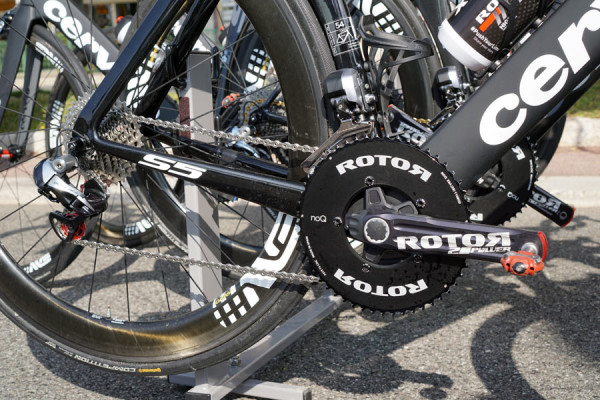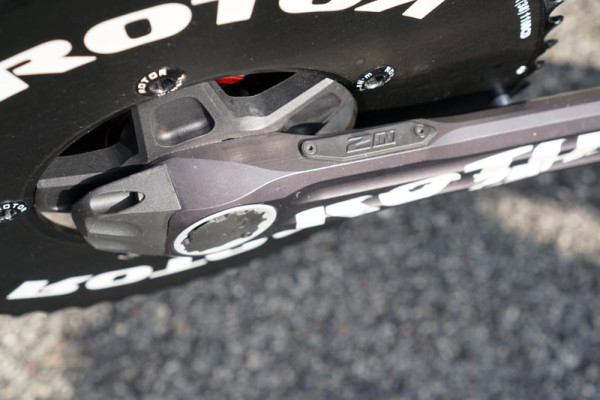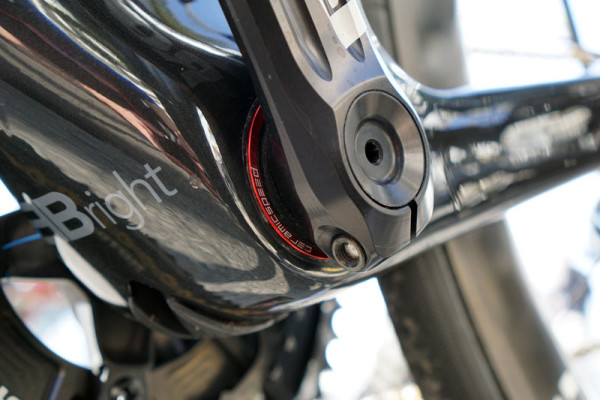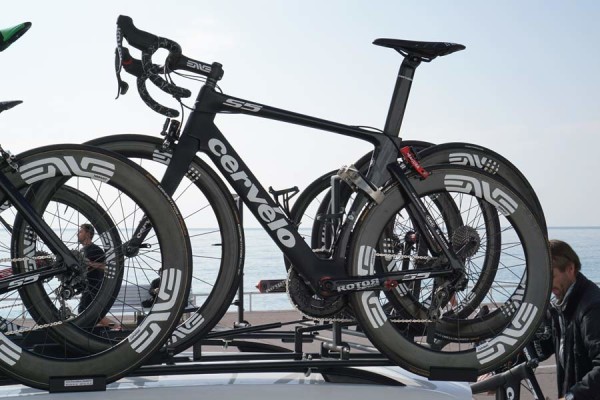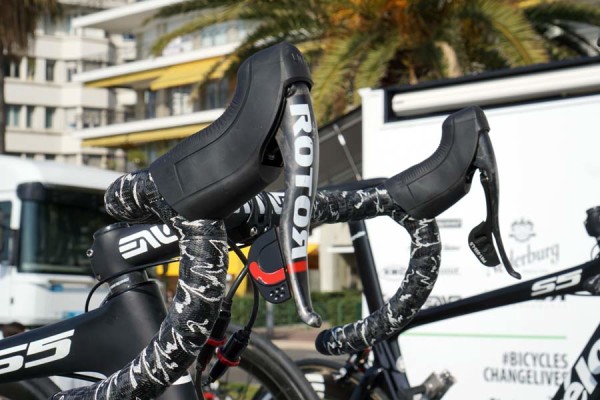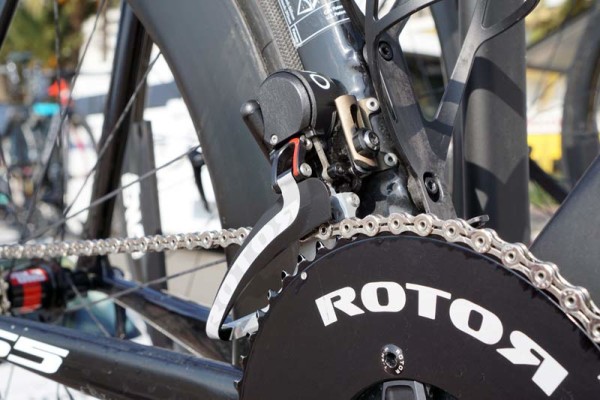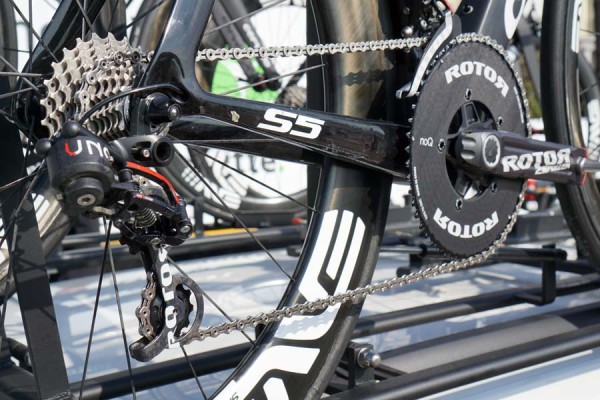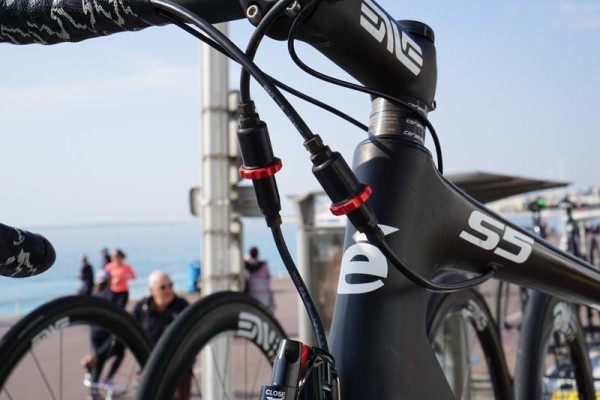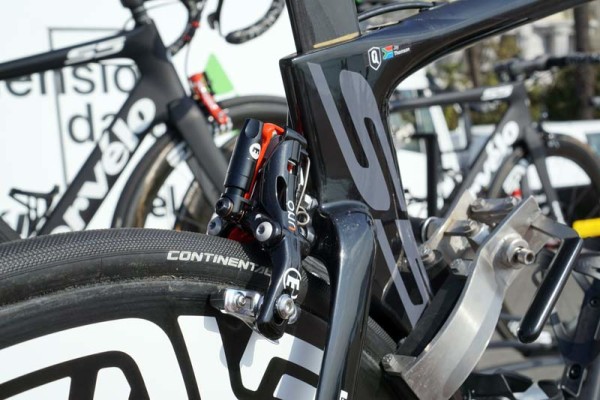The Dimension Data pro cycling team had two sets of Cervelo S5 bikes on hand. The majority were equipped with Shimano Dura-Ace Di2 handling the shifting, but a few were sitting atop team cars with the new Rotor UNO hydraulic shifting group. Starting with the former, the spec mostly carries over from what we saw at the Tour de France last year when they were called MTN-Qhubeka. That means ENVE wheels, bar and stem, Continental tires and Rotor cranks.
This time around, we took a closer look at the CeramicSpeed upgrades and photo’d the all-hydraulic backup bikes…
The latest cranks from Rotor are the 2INpower dual sided power meter crankset. It uses the spindle-mounted strain gauge of the original, single-sided INpower cranks with a second strain gauge inside the right crank arm:
After giving the crankset a back spin, we inquired about the setup because it moves effortlessly. Even brand new bikes sitting on the showroom floor don’t spin this freely. The reason? They’ve replaced every moving part except the pedal’s bearings with CeramicSpeed components. That includes the headset, hub bearings, bottom bracket and derailleur pulley wheels. They also use CeramicSpeed’s lube oil on the chain, which is outside the intended use parameters, but when your bikes are cleaned and maintained daily, you can get away with stuff like that.
Interestingly, they’re not running the massively oversized CS pulley wheels introduced last fall. We didn’t get a chance to ask why, but it’s likely because a sponsor like Shimano wouldn’t take too kindly to such modifications (though it doesn’t seem to stop Cannondale)
This bike shows what a full hydraulic component group will look like (it’s still chain driven, of course).
The lever body contains the master cylinder for the brakes, but none is required for the shifting system because it’s completely closed. Check our tech breakdown of the entire group for more the deep dive. These hoods look big, but Rotor’s said they could probably offer a smaller size option for those with smaller hands.
We’ll be riding UNO in early April with the engineers at Rotor, stay tuned for a first ride report.
If you’ve seen Acros’ hydraulic shifters and derailleurs, you’ll notice UNO uses just one single hose rather than two. That’s possible thanks to a clever ratcheting system that either catches and holds, or releases, depending on how far it’s pushed.
These rather large connectors in the brake lines allow bleed-free disconnects between the levers and the Magura RT8 hydraulic rim brake calipers. These don’t look quite like the stock offerings from Magura.
They have an external dial sticking out and up from the center mounting bolt, which looks like it could simply be a pad contact adjustment / release mechanism to speed wheel changes.
